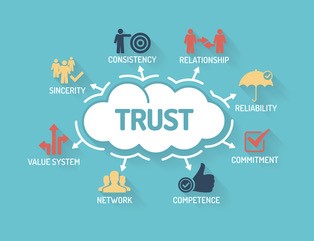
Building Trust through Consistency
July 18, 2017
Roles’ Refresh: The Power of the RACI Analysis
June 8, 2018“The art of communication is the language of leadership” –James C. Homes
This is the third article dedicated to assisting leadership in connecting to and harnessing the power of their teams. The theme throughout these chats remains Knowing Your People. Now onto the second pillar of C3 Communication.
Closely aligned with achieving constant communication is ensuring that you are putting in place engagement opportunities that will ensure your consistent messages are continuous. This is not a sprint but a marathon, prepare well and be committed.
Continuous communication is a way to dampen, not ignore or get rid of, the many competing signals that grab your team’s attention. Remember, the goal is to lift heads up with something that is appealing, worth doing and reliably present. There are many modes available to you such as email blogs, bulletin boards, newsletters and staff meetings.
Yes, another meeting but with a different intention. A meeting that isn’t entirely, ideally nothing, about deadlines and execution but about feedback and motivating. Name this meeting appropriately so that it develops a personality of its own and will be looked forward to by your people. I have used “Sync” or “Pulse” in the past. If, due to time constraints, you must talk business during this meeting, create a more relaxed exchange than an “official” meeting, or, ensure that there is an obvious phase shift during the meeting where the audience knows it is time to put their calendars aside. This less-pressurized meeting is much easier to achieve if you have been delivering the business piece (progress updates, future planning) previously. If not, it would be beneficial to first put in place a regular meeting that impacts the bottom line so that you can pivot in the future to one more personal to your team.
It may be easier to think of continuous communication having two sides, business and personal. You will find the ideal balance between the two with patience as there is not a neat formula for dividing up your week’s schedule. Each organizational culture has a unique operational pulse and will require a different mix of the two. Once an established routine is achieved that optimizes your time between business and personal connection your team will understand when the occasion arises that puts the personal connection time on hold. If you are connecting well with them, when “their” time is missed you will be reminded and it will find its way into the schedule without your priming.
Over time, as the routine becomes mature, you will find an openness among your team. Their thoughts and recommendations will flow; a sign that they are feeling ownership. And, as you have guessed, nothing powerful comes without a little more work on your part, following up on their suggestions and concerns.
Copyright (c) 2016 Evoke Development LLC. All rights reserved. You may reprint this entire article – please include the copyright and the following info “Evoke Development provides organizational and leadership development services with an Individualized focus that Optimizes talent and Energizes the Organization. Wally Lovely is a speaker, coach and consultant who recently retired after a 33-year career as a Surface Warfare Officer in the U.S. Navy.”

